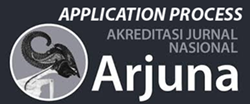Analysis of Consultant Building Project Management Using the CPM (Critical Path Method)
DOI:
https://doi.org/10.59653/jbmed.v2i03.891Keywords:
Critical Path Method (CPM), Project Management, Building Construction, Project Scheduling, Project PlanningAbstract
Critical Path Method (CPM) is a technique used to plan and organize project schedules by identifying the critical path which is one of the most contributing aspects to project success. This research aims to formulate the completion time of the consultant office building construction project using the CPM method. Data collection techniques in this study were carried out through various activities, including field observations, interviews, and literature studies. The results showed that the application of CPM in project planning and scheduling can determine the critical path and identify the shortest duration for project completion. CPM enabled the acceleration of project completion from 592 days to 469 days, saving 123 days. This study confirms that the quality of project planning and control significantly affects the successful completion of the project. The findings support the use of CPM for time efficiency improvement on similar construction projects and recommend further research on the application of CPM on various other types of projects.
Downloads
References
Algifari. (2018). Statistiika Deskriptif Plus Untuk Ekonomi dan Bisnis. UPP STIM YKPN.
Arikunto, S. (2011). Prosedur Penelitian: Suatu Pendekatan Praktik. PT. Rineka Cipta.
Calderon-Tellez, J. A., Bell, G., Herrera, M. M., & Sato, C. (2024). Project management and system dynamics modelling: Time to connect with innovation and sustainability. Systems Research and Behavioral Science, 41(1), 3–29. https://doi.org/10.1002/sres.2926
Gunasti, A., Rofiqi, A., & Priyono, P. (2019). Penerapan Metode Barchart, CPM, PERT dan Crashing Project dalam Penjadwalan Proyek Pembangunan Gedung G Universitas Muhammadiyah Jember. Jurnal Rekayasa Teknik Sipil, 4(1), 7–12.
Hidayat, A., & Ramadhany, C. (2021). Analisa Penerapan Manajemen Waktu Pada Proyek Penggunaan Jembatan Gantung Lubuk Ulak Dengan Metode CPM. Jurnal Penelitian Dan Kajian Teknik Sipil, 7(2), 71–79.
Iwawo, E. R. M., Tjakra, J., & Pratasis, P. A. K. (2016). Penerapan Metode CPM Pada Proyek Konstruksi (Studi Kasus Pembangunan Gedung Baru Kompleks Eben Haezar Manado). Jurnal Sipil Statik, 4(9), 551–558.
Kasid, & Hermansyah. (2018). Analisis Pelaksanaan Penjadwalan Proyek Pembangunan Gedung Clubhouse Dengan Pendekatan CPM dan PERT Pada PT. XY. Journal Knowledge Industrial Engineering (JKIE), 1–14.
Lestari, L., Suseno, A., Sunaklis, & Geraldo, C. (2022). Penerapan Metode Project Evaluation and Review Technique dan Critical Path Method (CPM) terhadap Pembangunan Gedung. Jurnal Pendidikan Tambusai, 6(1), 880–888.
Miranda, S., & Tripiawan, W. (2019). Perbandingan Penentuan Waktu Baku Menggunakan Metode Time study dan Critical Path Method (CPM). Jurnal Sistem Dan Manajemen Industri, 3(1), 19–30.
Nalhadi, A., & Sunanta, N. (2017). Analisa Infrastruktur Desa Sukaci-Baros Dengan Metode Critical Path Method (CPM). Jurnal Sistem Dan Manajemen Industri, 1(1), 35–41.
Pires, L., & Varajão, J. (2024). Creativity as a topic in project management – A scoping review and directions for research. Thinking Skills and Creativity, 51. https://doi.org/10.1016/j.tsc.2024.101477
Saputra, N., Handayani, E., & Dwiretnani, A. (2021). Analisa Penjadwalan Proyek dengan Metode Critical Path Method (CPM) Studi Kasus Pembangunan Gedung Rawat Inap. Talenta Sipil, 4(1), 44–52.
Sofiah, R., & Siswoyo. (2024). Optimalisasi Waktu Pada Pelaksanaan Proyek Gedung Dengan Menggunakan Metode CPM dan PERT. Jurnal Rekayasa Dan Manajemen Konstruksi, 12(1), 23–28.
Telaumbanua, T. A., B. Mangare, J., & Sibi, M. (2017). Perencanaan Waktu Penyelesaian Proyek Toko MODISLAND Manado Dengan Metode CPM. Jurnal Sipil Statik, 5(8), 549–557.
Tijani, B., Jin, X., & Osei-Kyei, R. (2024). Effect of project organization elements on the mental health of project management practitioner in AEC projects. Engineering, Construction and Architectural Management, 31(1), 73–114. https://doi.org/10.1108/ECAM-04-2022-0309
Downloads
Published
How to Cite
Issue
Section
License
Copyright (c) 2024 Tandi Kadang, Puji Wahyu Hidayah, Kamelia Simarmata, Nathasya A. Putri, Krisvinus

This work is licensed under a Creative Commons Attribution-ShareAlike 4.0 International License.
Authors who publish with this journal agree to the following terms:
- Authors retain copyright and grant the journal right of first publication with the work simultaneously licensed under a Creative Commons Attribution-ShareAlike that allows others to share the work with an acknowledgement of the work's authorship and initial publication in this journal.
- Authors are able to enter into separate, additional contractual arrangements for the non-exclusive distribution of the journal's published version of the work (e.g., post it to an institutional repository or publish it in a book), with an acknowledgement of its initial publication in this journal.
- Authors are permitted and encouraged to post their work online (e.g., in institutional repositories or on their website) prior to and during the submission process, as it can lead to productive exchanges, as well as earlier and greater citation of published work (See The Effect of Open Access).





























